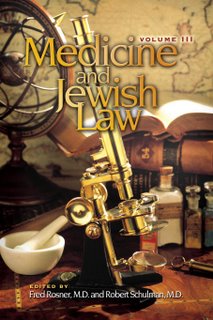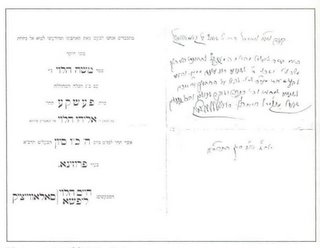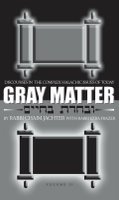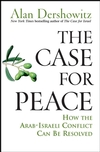I don't want to revisit the Slifkin Affar again. Consider this a defense not of R. Slifkin but of the great scholar R. David Tzvi Hoffmann.
On the
Avodah e-mail list, Rabbi Simcha Coffer, as part of his lengthy arguments in favor of a literalist understanding of the Creation narrative, wrote the following about the suggestion that the days of Creation were not 24-hour periods:
I ran a search in Tanach and the word yamim appears 292 times. There are two connotations: 1) Days 2) Seas. That's it!
In other words, when the Torah writes "
yom" in the Creation narrative, it must be referring to 24-hour periods. Similarly, when the Torah (Ex. 20:10) writes in the ten commandments that God created the world in six "
yamim", it must be referring to six periods of 24-hours.
I responded to this briefly and inadequately on the Avodah list. Since a moratorium has been imposed on this subject (it has dragged on for around a year), I'll post a more complete response here.
Rabbi Coffer's statement that "
yom" and "
yamim" always refer to periods of 24-hours is, in my estimation, contrary to the Jewish tradition from the times of the Talmud through the medieval era and continuing to the modern era. Let me elaborate.
I. CreationFirst, it is clear that the word "
yom" sometimes refers to the period of daylight, i.e. somewhere from 6-12 hours. Thus, Gen. 1:5 speaks of "
yom" and "
laylah", the former referring to the time of daylight and the latter to the time of darkness. The same applies to Gen. 1:14 and 1:16, where "
yom" refers to less than a 24-hour period.
Gen. 2:4 speaks of all Creation happening during one "
yom". Does this mean that everything was really created on the first day, as Rashi suggests (i.e. Creation did not occur in the order described in the first chapter!)? That is definitely one of a number of possible explanations of this difficult verse. It could also be referring to the enter six "days" of Creation as one "
yom", further emphasizing that "
yom" does not necessarily have a fixed time span.
II. Days of JubileeGenerally, a plot of land in Israel that is sold returns to its original owner on the Jubilee year. However, plots within a walled city do not. Once a redemption period following the sale passes, the land belongs eternally to its new owner. How long is this redemption period? The Torah (Lev. 25:29) defines it as "
yamim tihyeh ge'ulaso" which the oral tradition (
Kesubos 57b) teaches us is one year. "
Yamim" here does not mean a few days but a year.
You might respond that this refers to "days" which must be a plurality of a day. A year is a valid plurality of days. But when the Torah specifies the number of days, as in the ten commandments' six days, it must refer to six 24-hour days. However, as Rashi on the above verse points out, there is another similar case.
When Rivka sent away her son, Ya'akov, she told him to wait for a certain time period until his brother Esav's anger calmed down. The time period is: "
Yamim ahadim" -- a few days (Gen. 27:44). Ibn Ezra compares this to the above verse about the jubilee, explaining it as a few
years. "
Yamim" here means years and "a few days" means "a few years". As Rashi (Gen. 29:20) points out, this time period of years (which turned out to be 22 years) is referred to on three occasions as "
yamim" (Gen. 27:44, 29:18, 20,).
Similarly, when Rivka was about to go with Eliezer to marry Yitzhak, her mother and brother asked that she remain with them for another period of time -- "
Yamim o asor" (Gen. 24:55). Rashi, quoting the above Gemara, writes that this is similar to the case of the Jubilee, in which "
yamim" refers to a full year.
III. More ExamplesBoth R. Yonah Ibn Janah and Radak, in their books both of which are named
Sefer Ha-Shorashim, give multiple definitions of the term "
yom", with many biblical examples to subtantiate these definitions.
For example:
- Ex. 13:10: "You shall keep this ordinance
mi-yamim yamimah". This does not mean that you have observe Passover every day. Here, "
yamim" means a year.
- Numbers 8:17: "
Be-yom I struck all the firstborn in the land of Egypt." Here, "
yom" refers to a specific time and not to a 24-hour period.
- Gen. 25:33: "Swear to me
ka-yom." Here, "
yom" means at this time.
- Deut. 32:7: "Remember
yemos of the world." "
Yom" certainly does not mean a 24-hour period but, rather, thousands of years!
- Isaiah 54:7: "
Ki-yemei of Noah are these." Some translate "
yemei" as "the waters" but some as the "days", with days here meaning the general era of the Flood (cf. Radak ad loc.).
- Isaiah 11:1: "And on that
yom the root of Jesse will stand as a signal to the peoples." That verse is certainly not referring to just a single 24-hour period.
IV. ConclusionIt is clear that, in biblical Hebrew, "
yom" and "
yamim" do not refer solely to 24-hour periods. They can refer to other time periods and even to a general, unspecific period of time.
Is it a stretch to suggest that the "
yom" and "
yamim" of Creation refer to billions of years? I think everyone will agree that it is. But that does not mean that it is necessarily incorrect. It could very well be true, as R. David Tzvi Hoffmann and others have suggested.

 10:41 AM
10:41 AM
 Gil Student
Gil Student























